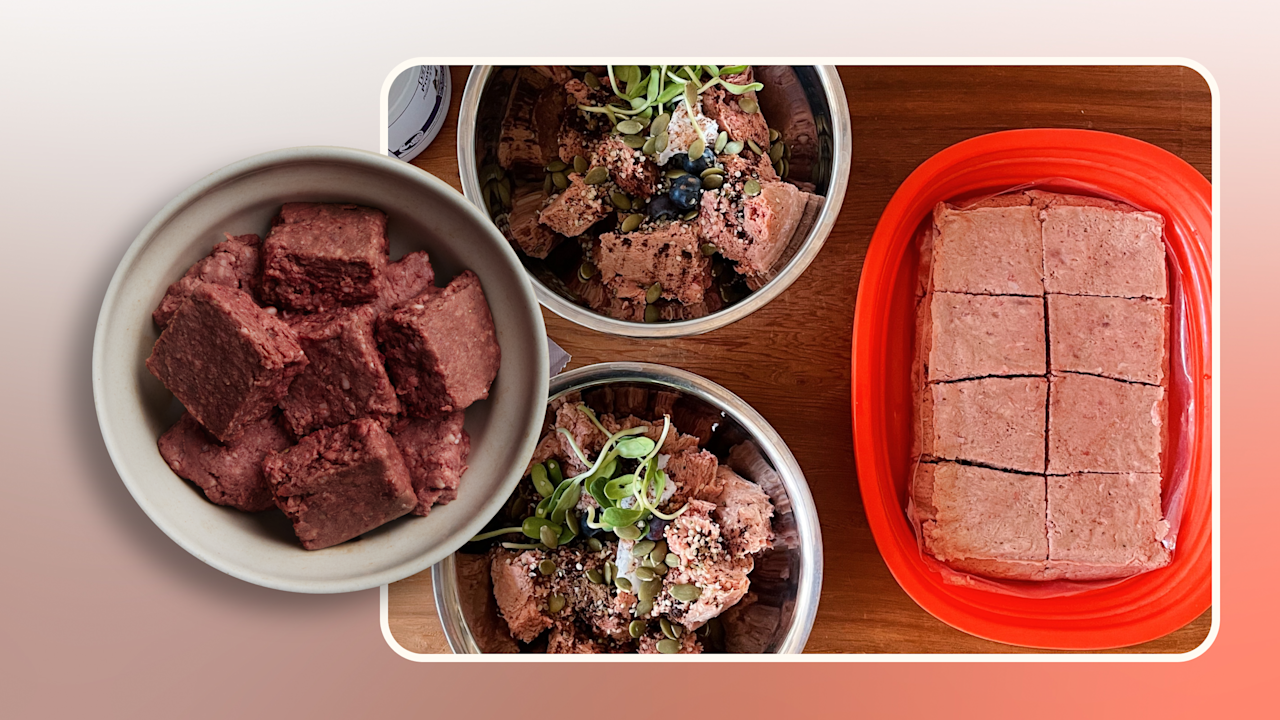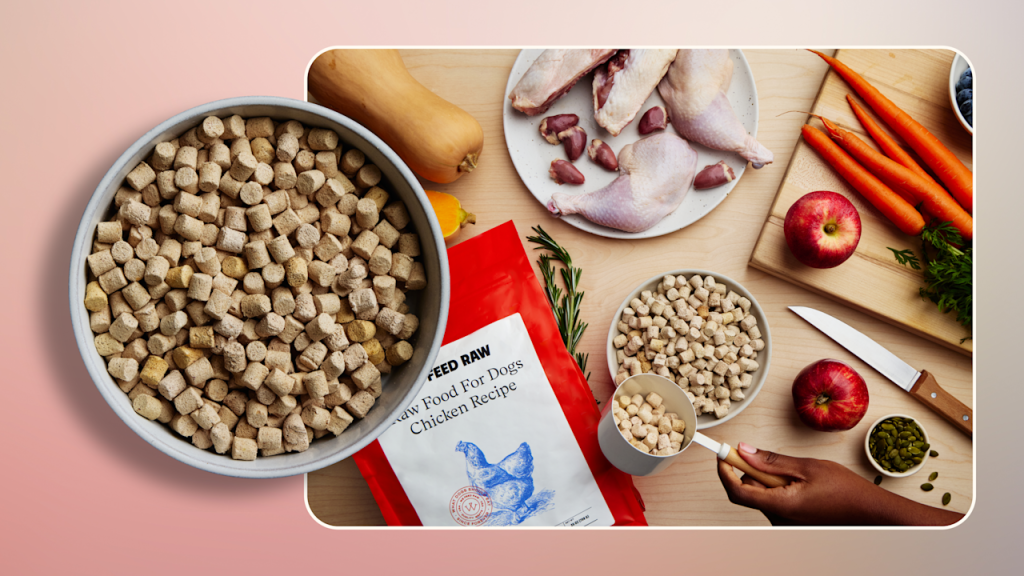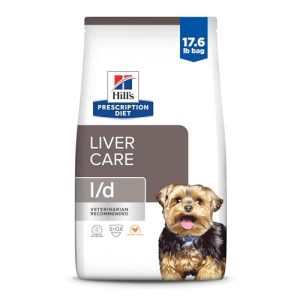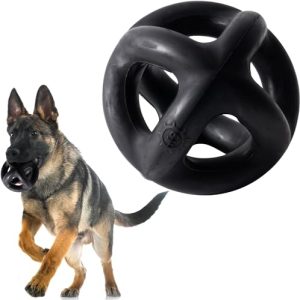Imagine serving your furry friend a meal that not only satisfies their hunger but also boosts their health and vitality. You’re probably always on the lookout for the best ways to keep your dog happy and healthy, right?
That’s where the concept of raw food for dogs comes in. This diet trend is catching the attention of dog owners everywhere, promising benefits like shinier coats, cleaner teeth, and increased energy levels. But what exactly is a raw food diet for dogs, and is it really the right choice for your pet?
Stick around as we dive into the details, explore the pros and cons, and help you make an informed decision that could transform your dog’s life.

Credit: www.k9sovercoffee.com
Benefits Of Raw Feeding
Raw feeding means giving dogs food that is fresh and uncooked. Many pet owners choose this diet for its natural qualities. Raw food often includes meat, bones, and vegetables.
Switching to raw food can improve your dog’s health in several ways. Here are some key benefits.
Improved Digestion
Raw food is easier for dogs to digest. It contains natural enzymes that help break down food. This means less stool and fewer digestive problems.
Shinier Coat And Healthier Skin
Raw diets have healthy fats and oils. These nutrients make a dog’s coat shiny and skin soft. Many dogs show less itching and dryness on this diet.
Increased Energy Levels
Raw food gives dogs better energy. The fresh nutrients fuel active play and exercise. Many owners notice their dogs feel more lively and alert.
Weight Management
- Raw food is low in fillers like grains.
- It helps maintain a healthy weight.
- Portion control is easier with raw meals.
- Lean proteins build muscle and reduce fat.

Credit: www.k9sovercoffee.com
Components Of A Raw Diet
A raw food diet for dogs consists of natural and uncooked ingredients. It aims to provide balanced nutrition with fresh components. Each part plays a special role in the dog’s health.
Understanding these components helps you prepare meals that meet your dog’s needs. Let’s explore the main parts of a raw diet.
Muscle Meat And Organs
Muscle meat is the main source of protein for dogs. Organs like liver and kidneys supply essential vitamins and minerals. Together, they support strong muscles and good health.
Bones And Cartilage
Raw bones offer calcium and phosphorus needed for healthy teeth and bones. Cartilage provides glucosamine, which helps joint health. Always use raw, not cooked, bones to avoid splinters.
- Chicken necks
- Turkey wings
- Beef trachea
- Fish bones (soft and small)
Fruits And Vegetables
Fruits and vegetables add fiber, vitamins, and antioxidants to your dog’s diet. They help digestion and boost the immune system. Offer them finely chopped or pureed for easy eating.
| Vegetable | Benefit |
| Carrots | Good for eyes and skin |
| Spinach | Rich in iron and vitamins |
| Blueberries | High in antioxidants |
| Pumpkin | Supports digestion |
Supplements And Additives
Supplements fill nutrition gaps in the raw diet. Common additives include fish oil for omega-3 fats and probiotics for gut health. Use them carefully and in correct amounts.
- Fish oil
- Vitamin E
- Probiotics
- Kelp powder
Choosing Quality Ingredients
Feeding your dog raw food means selecting the best ingredients. Quality affects your dog’s health and energy.
Choosing fresh and safe items helps your dog get the right nutrients. This guide covers key points to consider.
Sourcing Fresh Meat
Fresh meat is the main part of a raw dog diet. Pick cuts that are clean and free from bad smells. Buy from trusted butchers or farms.
- Choose meat that is bright in color and firm
- Look for labels that say “human grade” or “fresh”
- Avoid meat with excessive blood or slimy texture
- Keep meat cold during transport to stop bacteria growth
Organic Produce Benefits
Organic fruits and vegetables offer more nutrients for your dog. They have fewer chemicals that can harm health. Use organic options when possible.
| Produce | Benefit |
| Carrots | Good source of fiber and vitamins |
| Spinach | Rich in iron and antioxidants |
| Blueberries | Full of vitamins and low in sugar |
| Sweet Potatoes | Provide energy and support digestion |
Avoiding Harmful Additives
Many dog foods have additives that can cause harm. Avoid preservatives, artificial colors, and flavors. Check ingredient lists carefully.
Here are common harmful additives to avoid:
- BHA and BHT (preservatives)
- Artificial colors like Red 40 or Yellow 5
- Sodium nitrate and nitrite
- Propylene glycol
- Added sugars
Preparing Raw Meals Safely
Feeding dogs raw food can be healthy if done right. Safety is key to avoid illness.
This guide covers hygiene, storage, and portioning tips for raw meals.
Hygiene And Sanitation Tips
Cleanliness stops germs from spreading to your dog’s food. Wash your hands before and after handling raw meat.
- Use separate cutting boards for raw meat and other foods
- Sanitize all surfaces and tools after use
- Keep your dog’s feeding area clean and dry
- Wear gloves if you have cuts on your hands
Proper Storage Techniques
Store raw food safely to keep it fresh and avoid bacteria growth. Freeze meals in small packs for easy thawing.
| Storage Method | Temperature | Duration |
| Refrigerator | Below 40°F (4°C) | 1-2 days |
| Freezer | 0°F (-18°C) or lower | 3-6 months |
| Thawing | In fridge or cold water | Use within 24 hours |
Portioning For Different Sizes
Dogs need different amounts of food based on their size and activity. Divide meals into portions to fit your dog’s needs.
- Weigh your dog to estimate daily food needs
- Use smaller portions for small or less active dogs
- Feed larger or active dogs bigger portions
- Store portions separately to keep them fresh
Transitioning To A Raw Diet
Switching your dog to a raw food diet takes time and care. It helps your dog adjust without stomach problems.
Watch your dog closely during this change to keep them healthy and happy.
Gradual Introduction Methods
Start by mixing small amounts of raw food with your dog’s current diet. Increase raw food slowly over several weeks.
This slow change helps your dog’s digestive system get used to the new food.
- Begin with 10% raw food and 90% old food
- Increase raw food by 10% each week
- Watch for any signs of upset stomach
- Keep fresh water available at all times
Monitoring Health Changes
Check your dog’s weight and energy during the diet change. Look for changes in coat shine and stool quality.
Keep a daily log to track your dog’s behavior and health. Talk to your vet if you see unusual symptoms.
- Note any vomiting or diarrhea
- Watch for changes in appetite
- Check for skin irritation or itching
- Observe energy levels and mood
Common Challenges And Solutions
Some dogs may resist raw food at first. Others might have mild digestion problems. Patience is key.
Try different raw ingredients or mix textures if your dog refuses food. Consult your vet for ongoing issues.
- If your dog refuses food, try adding small cooked veggies
- Use ground meat if whole pieces are hard to eat
- Introduce probiotics to help digestion
- Keep regular vet checkups during transition
Potential Risks And Precautions
Feeding dogs raw food has benefits and risks. It is important to know the dangers. Taking precautions keeps your dog safe and healthy.
This guide explains the main risks of raw food for dogs. You will learn how to reduce these risks before feeding your pet.
Bacterial Contamination
Raw meat can carry harmful bacteria. These bacteria can cause illness in dogs and humans. Handling raw food safely lowers this risk.
- Wash hands before and after touching raw food
- Clean bowls and utensils with hot water
- Store raw meat in the refrigerator or freezer
- Feed raw food fresh and discard leftovers quickly
Nutritional Imbalances
Raw diets may lack important nutrients. Missing vitamins or minerals can harm your dog’s health. Balance is key for a complete diet.
| Nutrient | Possible Deficiency | Effect on Dog |
| Calcium | Low in muscle meat only diets | Weak bones and teeth |
| Vitamin D | Missing from some raw foods | Poor bone growth |
| Taurine | Low in some meats | Heart problems |
| Fiber | Often absent | Digestive issues |
Consulting A Veterinarian
Talk to a vet before starting raw food. They can help create a safe meal plan. Regular check-ups catch health problems early.
- Discuss your dog’s health history
- Ask about supplements to add
- Schedule regular blood tests
- Report any changes in your dog’s condition
Myths About Raw Feeding
Raw feeding for dogs is a popular topic. Many people have strong opinions about it.
Some ideas about raw food are not true. Let’s look at common myths and facts.
Raw Food Causes Illness
People think raw food makes dogs sick. This is not always true. Proper handling lowers risks.
Fresh ingredients and clean preparation keep food safe. Dogs have strong stomach acids.
- Wash hands and surfaces before preparing food
- Use fresh, high-quality meat and vegetables
- Store raw food in the fridge or freezer
All Dogs Thrive On Raw Diets
Some think every dog does well on raw food. This is not true. Dogs have different needs.
Some dogs with health problems may need cooked or special diets. Always watch your dog’s health.
- Consult your vet before changing diets
- Not all dogs digest raw food well
- Adjust diet to fit your dog’s needs
Raw Feeding Is Expensive
People say raw feeding costs too much. It can be more expensive but not always.
Making raw food at home saves money. Buying in bulk lowers cost too.
- Cooked commercial diets can also be costly
- Homemade raw meals allow control over ingredients
- Budget options include chicken, organs, and vegetables
Commercial Raw Food Options
Raw food for dogs is gaining popularity. It offers a natural diet with less processing. Many pet owners choose commercial raw food for ease and balance.
These products come in various forms. They suit busy lifestyles but still provide essential nutrients. Let’s explore main commercial raw food options.
Pre-made Raw Diets
Pre-made raw diets are ready to serve. They include meats, bones, and sometimes vegetables. These products save time and reduce preparation mess.
They come in frozen or chilled packs. Some brands mix all ingredients, while others sell components separately. Always check the ingredients list for quality.
Freeze-dried And Dehydrated Foods
Freeze-dried and dehydrated foods are raw diets with moisture removed. They last longer and are easy to store. Just add water before serving.
- Lightweight and portable for travel
- Retain most nutrients of raw food
- No need for freezer space
- May have a stronger smell
- Usually cost more than frozen options
Evaluating Brands And Quality
Choosing the right brand means checking several factors. Quality and safety should be top priorities. Look for transparency and certifications.
| Factor | What to Check | Why It Matters |
|---|---|---|
| Ingredient Source | Local, organic, or grass-fed meats | Better nutrition and fewer chemicals |
| Processing Methods | Minimal heat and additives | Preserves nutrients and taste |
| Third-Party Testing | Independent lab results | Ensures safety and quality |
| Customer Reviews | Feedback on pet health and satisfaction | Real experiences and trust |
Homemade Raw Food Recipes
Feeding your dog raw food can be healthy and natural. You control what goes into their meals.
Homemade raw food recipes help you give your dog fresh, balanced nutrition. Let’s explore some ideas.
Basic Balanced Recipe
A good raw food recipe includes meat, organs, bones, and vegetables. Balance is key to nutrition.
Use 80% muscle meat, 10% bone, 5% liver, and 5% other organs. Add veggies for fiber.
- Muscle meat: chicken, beef, or turkey
- Bone: raw chicken wings or necks
- Liver: fresh or frozen
- Other organs: kidney, spleen
- Vegetables: carrots, spinach, or pumpkin
Meal Plans For Puppies
Puppies need more calories and nutrients than adult dogs. Feed small, frequent meals.
Include extra calcium and protein to support growth. Keep meals fresh and easy to digest.
- Muscle meat: 85% of meal
- Bone: 10% for calcium
- Liver: 5% for vitamins
- Vegetables: small amounts of pumpkin or zucchini
- Feed 3-4 times daily
Meal Plans For Senior Dogs
Older dogs need fewer calories but more joint support. Protein quality is important.
Include fish and soft bone sources. Add vegetables rich in antioxidants and fiber.
- Muscle meat: 70% (include fish like salmon)
- Bone: 10% soft, easy to chew
- Liver and organs: 10%
- Vegetables: spinach, green beans, blueberries
- Add fish oil for omega-3

Credit: wefeedraw.com
Frequently Asked Questions
What Is Raw Food For Dogs?
Raw food for dogs is a diet of uncooked meat, bones, fruits, and vegetables. It mimics what wild dogs eat. This diet aims to provide natural nutrients and improve digestion and health.
Is Raw Food Diet Safe For Dogs?
Raw food can be safe if properly prepared and balanced. It reduces processed ingredients but may risk bacteria. Consult a vet before switching to ensure nutritional needs are met.
What Are The Benefits Of Raw Food For Dogs?
Raw food often improves coat shine, energy levels, and digestion. It can reduce allergies and dental issues. Dogs may also experience better weight management and overall vitality.
Can All Dogs Eat Raw Food?
Most healthy dogs can eat raw food, but puppies, pregnant dogs, and those with health problems should avoid it. Always consult your vet to ensure it suits your dog’s needs.
Conclusion
Raw food for dogs means feeding them fresh, natural ingredients. It includes meat, bones, and vegetables. This diet can help improve their health and energy. Always choose quality ingredients and keep safety in mind. Consult your vet before changing your dog’s food.
Raw feeding is not for every dog. Watch your pet closely for any changes. Feeding raw can be simple and healthy if done right. Give your dog the best care with thoughtful food choices.

Emily Barker is the founder of ChillDogLife.com, a space dedicated to helping pup parents discover the best dog products, lifestyle tips, and cozy ideas for happier homes.
A lifelong dog lover, Emily combines her passion for pets with a knack for research to share trusted recommendations on everything from toys and furniture to health and everyday care.
Her goal is simple: to make life easier, stylish, and more joyful for dogs and the people who love them.







